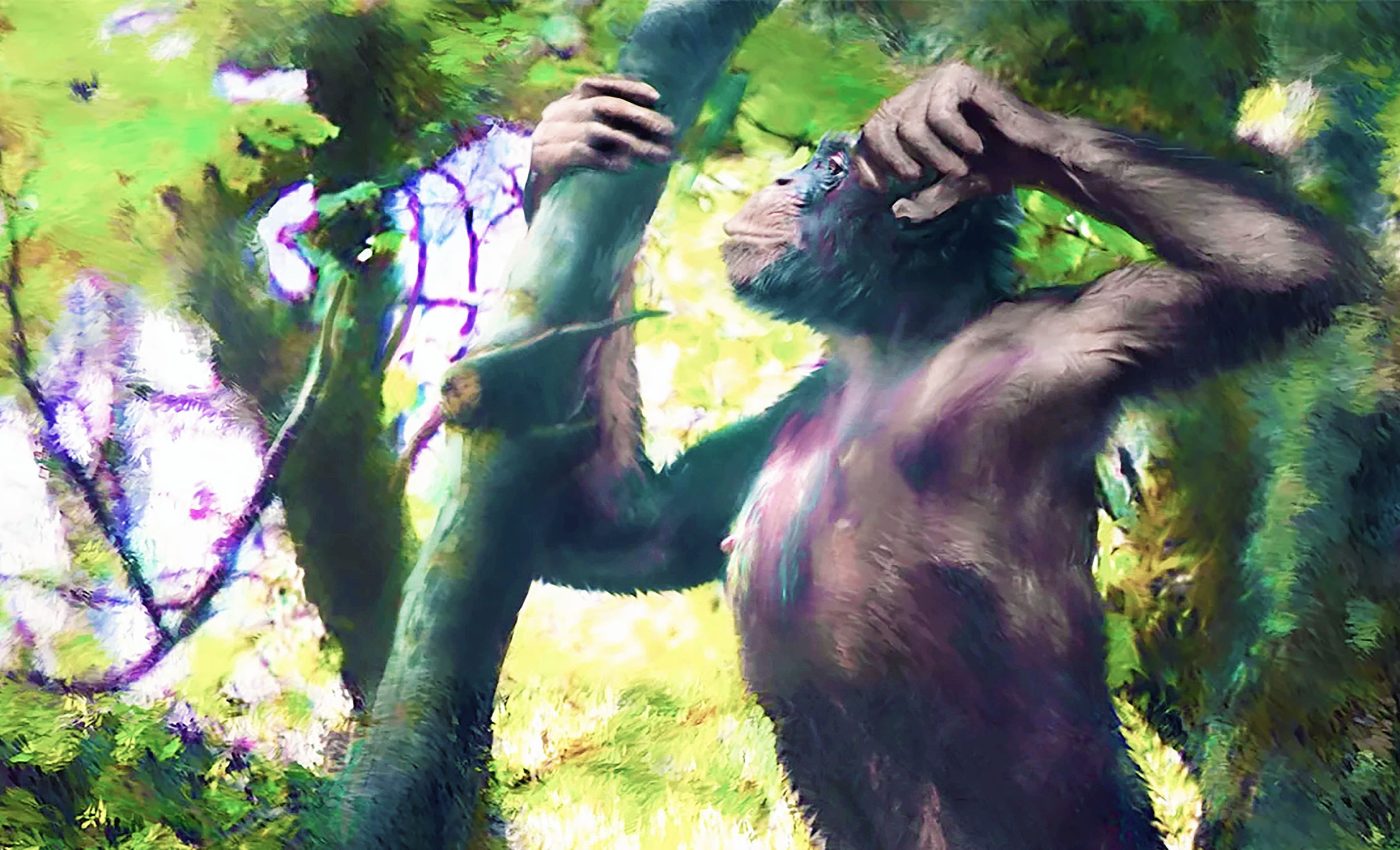
Tiny great ape species discovered that lived 11 million years ago
In a remarkable discovery, researchers have unearthed a previously unknown species of great ape, Buronius manfredschmidi, that inhabited the region approximately 11.6 million years ago during the late Miocene Epoch.
This discovery sheds light on the diversity of ancient apes in Europe and provides insights into their ecological interactions.
Buronius manfredschmidi: A new great ape
This new species, Buronius manfredschmidi, is distinguished by its relatively diminutive stature, with an estimated body weight of just about 10 kilograms, making it the smallest known great ape.
The partial remains include two teeth and a patella (knee cap), each showcasing unique characteristics that set Buronius apart from its contemporaries, including the larger-bodied Danuvius, another ape species from the same site.

The structure of Buronius’s teeth and patella suggests that it was an adept climber with a diet primarily consisting of soft foods like leaves.
Coexistence without competition
The presence of two distinct ape species in the same stratigraphic layer at the Hammerschmiede fossil site in Bavaria, Germany is particularly intriguing.
It indicates that Buronius and Danuvius managed to coexist by occupying different ecological niches.
This phenomenon, known as syntopy, is observed today in species such as gibbons and orangutans, which share habitats in Southeast Asia without direct competition for food resources.
Buronius manfredschmidi, with its leaf-based diet, and Danuvius, which had a more varied diet including tougher foods, demonstrate a similar pattern of resource partitioning.
Great apes and the evolution of European ecosystems
This find marks the first known instance of hominid syntopy in Europe’s fossil record. It challenges previous notions that no Miocene site in Europe hosted more than one species of fossil ape.
The authors of the study suggest that further examinations of similar sites might reveal more instances of such cohabitation, potentially rewriting parts of our understanding of ancient ape communities.
The lead researchers, Madelaine Böhme from Eberhard Karls University of Tübingen, Germany, and David R. Begun from the University of Toronto, Canada, emphasize the significance of this discovery.
“The new great ape from Hammerschmiede, Buronius manfredschmidi, is not only the smallest known crown ape, but it also attests to the first case of hominid syntopy for Europe,” they remark.
Implications of Buronius manfredschmidi find
While the research on Buronius manfredschmidi primarily focuses on its discovery and characteristics, there are additional intriguing aspects and implications beyond this.
Ecological and evolutionary
Buronius manfredschmidi‘s small size and unique dietary preferences suggest it may have occupied a specific ecological niche, potentially similar to modern small primates like gibbons or some monkeys.
This adaptation might indicate a broader range of primate diversity and specialization during the Miocene Epoch in Europe.
The discovery of Buronius manfredschmidi provides valuable information about the evolutionary pathways of great apes.
Its presence in Europe adds to the evidence that great apes were once widespread across the continent, contrasting with the current distribution mainly in Africa and Southeast Asia.
This distribution shift likely resulted from climatic and environmental changes over millions of years.
Comparative anatomy of Buronius manfredschmidi
The anatomical features of Buronius manfredschmidi, such as its teeth and patella, offer comparative data for studying the evolution of locomotion and diet in primates.
Comparing these features with other fossil and extant species can help scientists understand the evolutionary pressures and adaptations that shaped primate development.
The discovery of Buronius manfredschmidi also underscores the importance of advanced paleontological techniques, such as high-resolution imaging and micro-CT scanning, which allow for detailed analysis of small and delicate fossils.
These technologies can reveal minute details about ancient species that were previously inaccessible, opening new windows into the past.
Unraveling the mysteries of ape evolution
Future research on Buronius manfredschmidi may involve exploring other fossil sites for additional specimens, which could provide a more comprehensive picture of its biology and ecology.
Genetic studies, if feasible, could also offer insights into the evolutionary relationships between Buronius and other great apes.
This new finding enriches our understanding of ape evolution and highlights the complex dynamics within ancient ecosystems.
As we continue to unearth and study these ancient relics, each discovery brings us closer to comprehending the intricate web of life that once thrived on our planet.
The full study was published in the journal PLoS ONE.
—–
Like what you read? Subscribe to our newsletter for engaging articles, exclusive content, and the latest updates.
Check us out on EarthSnap, a free app brought to you by Eric Ralls and Earth.com.
—–













